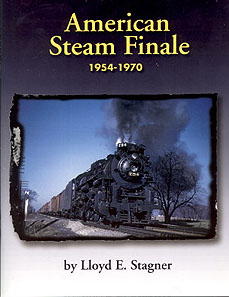
Lloyd Stagner’s book AMERICAN STEAM FINALE, 1954-1970 (South Platte Press, 2001; www.southplattepress.com) is the definitive resource on the end of steam on U.S. Class 1’s and short lines. In “Just Who Was First to Dieselize,” in Diesel Victory (2006), we mentioned 17 U.S. Class 1 railroads that dieselized early. To qualify for the list, the […]
Read More…
The year was 1939, and 29-year-old British stockbroker Nicholas Winton was set to leave for Switzerland on a ski holiday when he answered his phone. It was a friend conducting humanitarian aid in Prague, Czechoslovakia. This friend described the refugee camps in which he worked, and asked Winton to abandon his holiday, come to Prague, […]
Read More…
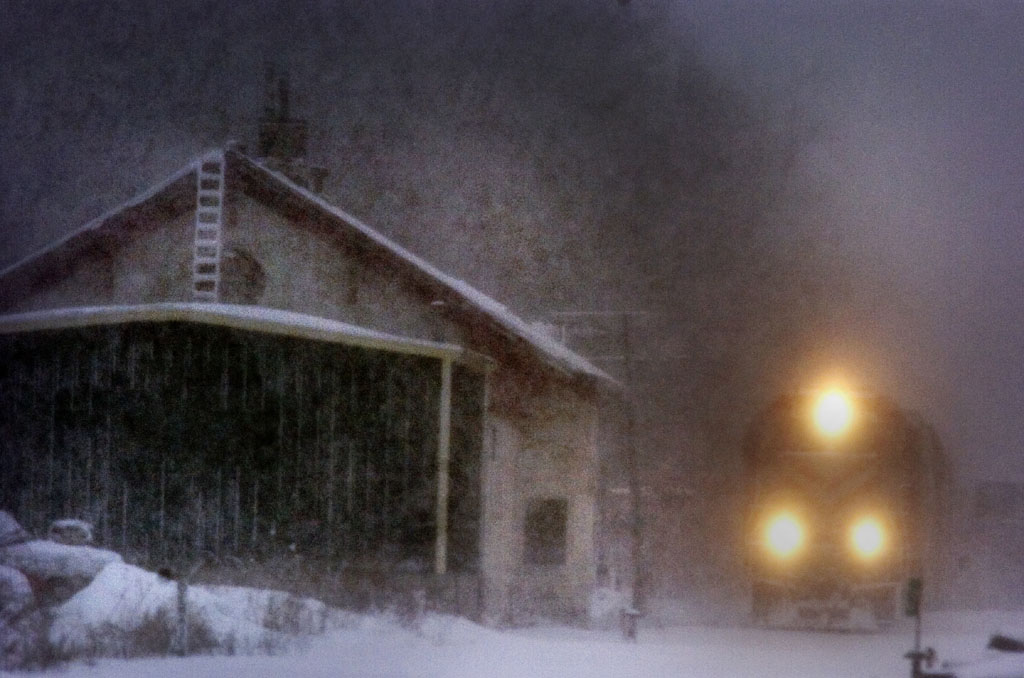
Wisconsin & Southern freight train passes a tobacco shed near Stoughton, Wisconsin, on Feb. 6, 2008, in the middle of a hard winter season. The mid-morning darkness and blizzard-like conditions give a very impressionistic feel to the photograph. Hank Koshollek Winter photography requires some skill and quite a bit of luck, partly because of the […]
Read More…
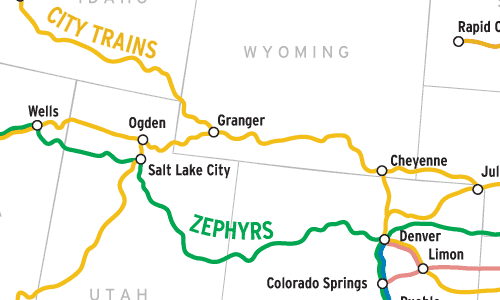
Robert Wegner This Map of the Month appeared in the December 2004 issue of Trains magazine. Although the idea of branding passenger-train fleets did not begin with the streamliner, it flourished in that era. Innovations such as stainless steel found widespread use in an age captivated by design. Suddenly, appearance mattered. Trains with colorful paint […]
Read More…
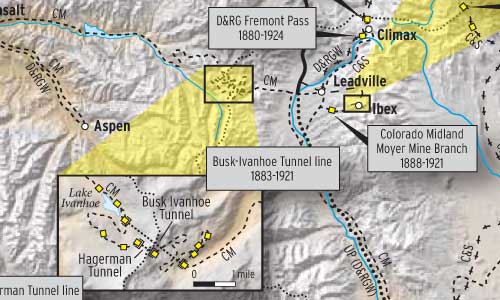
Bill Metzger This Map of the Month appeared in the December 2008 issue of Trains magazine. Colorado’s snowsheds were grouped on a few passes above the timberline or in avalanche-prone areas. The exact dimensions and locations of most snowsheds are not well documented. Over time they were built, extended, shortened, burned, and removed. Most were […]
Read More…
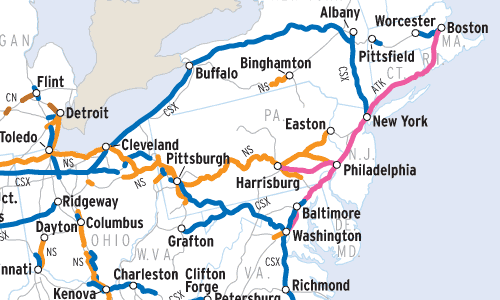
This Map of the Month appeared in the January 2006 issue of Trains magazine. Pick up any state highway map and the multi-lane roads are shown prominently. Most railroad maps don’t distinguish between single and double track, however, so to compile this map of U.S. multiple-track main lines, a variety of other sources had to be […]
Read More…

This Map of the Month appeared in the November 2004 issue of Trains magazine. “Everywhere West” was an appropriate slogan for a railroad that once operated over 12,000 route-miles across America’s heartland. The classically styled 1940 official railroad map at right shows how the Chicago, Burlington & Quincy grew from modest beginnings to become a major […]
Read More…
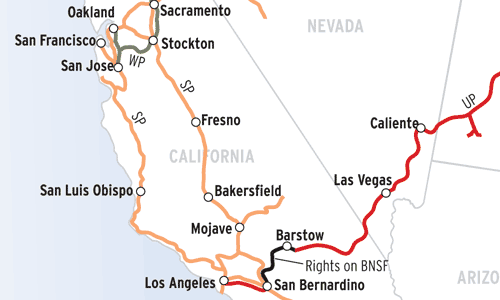
Jeff Wilson and Robert Wegner This Map of the Month appeared in the February 2007 issue of Trains magazine. Twenty-five years separate these two maps showing the busiest freight railroad lines in the United States. The 1980 map depicts American railroads at the end of regulation — the Staggers Rail Act of 1980 was signed […]
Read More…
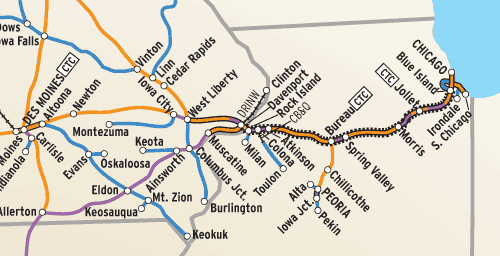
Bill Metzger This Map of the Month appeared in the October 2005 issue of Trains magazine. Rock Island Lines serve 14 Western states,” the Chicago, Rock Island & Pacific’s map in the Official Guides of 1964 proudly proclaimed, offering “7,849 miles of modern railroad.” Trouble was, Rock Island’s main lines went everywhere its parallel rivals […]
Read More…
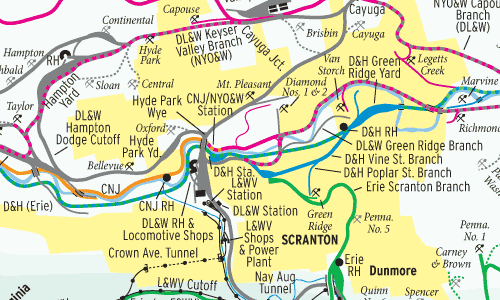
Dave Crosby and Bill Metzger This Map of the Month appeared in the April 2008 issue of Trains magazine. Delaware & Hudson Canal Co.’s 1826 Gravity Railroad over Moosic Mountain first hauled anthracite coal from Northeast Pennsylvania to New York City. By 1888, seven major railroads and several smaller lines tapped the rich coal seams […]
Read More…
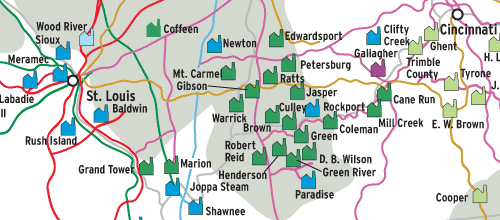
Robert Wegner This Map of the Month appeared in the January 2003 issue of Trains magazine. This is the second in our series of coal-fired power plant maps of the U.S. The first, showing the Northeastern quadrant of the U.S., appeared in June 2002 Trains. Electrical generation in the South obeys a much different pattern […]
Read More…
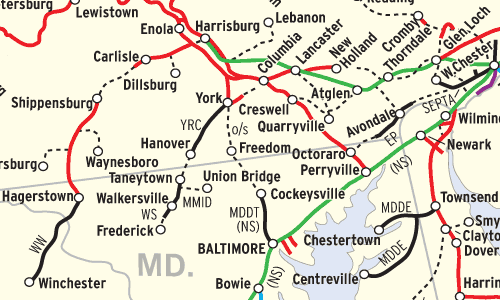
Bill Metzger This Map of the Month appeared in the February 2006 issue of Trains magazine. Mention the Pennsylvania Railroad and iconic images come to mind immediately: passenger trains rocketing down a four-track electrified main line; limiteds scooping water on the fly from track pans; impossibly long coal drags; and mammoth engineering projects, from Horseshoe […]
Read More…











